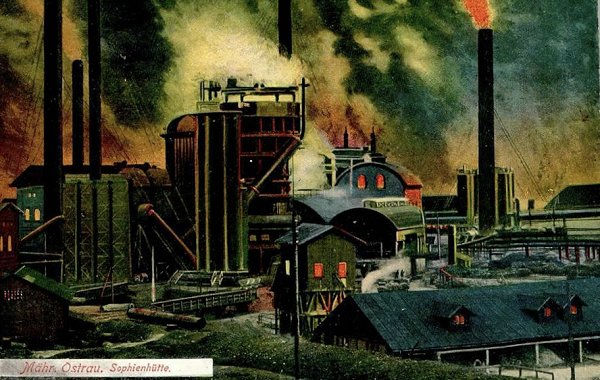The Anxious Victorian: Mental Health
- Sylvia Rose

- May 8, 2023
- 4 min read
Updated: Jan 28, 2025
The Victorian era brings progress to Europe, but also problems. Increased pace of life leads to stress conditions such as neurasthenia, an anxiety disorder first identified in 1825. By mid-century it's a popular diagnosis.

Growing awareness of mental health issues encourages compassionate treatment such as spas, massage, communication and hydrotherapy instead of isolation or punishment. Spas arise around mineral springs as the tide turns toward natural health.
Because Queen Victoria and her beloved husband Albert are German, the Victorian lifestyle and health trends are especially active in this part of continental Europe.
The home gym, bicycle and towns with "Bad" (Bath) and "Baden" (Baths, Bathing) in their names, mineral springs, clean air and sea water hydrotherapy all come into vogue. Health resorts are popular, with people spending months or even living at the spa.

Change happens quickly. Germany has early and late phase industrial progress. The first working steam locomotive, acquired in 1835 from Britain, leads the way to development in Germany.
Mid-century rebellions batter the lands of Europe. Pressures mount. In the first half of the century people swarm to cities to work in mass production.
There are jobs for everyone of any gender and age. People who once worked on the family farm have grueling days assembling machinery or making matches from toxic substances.

As Karl Marx points out in his theory of alienation the move to urban existence separates people from their work. People no longer own the means of production.
Work is a mechanical means to an end, not a vital part of life itself. Elevated anxiety and a whole tradition of hating Mondays demonstrates the basis of the theory.
"Owing to the extensive use of machinery and to division of labor, the work of the proletarians has lost all individual character, and consequently all charm for the workman."
Karl Marx - Communist Manifesto 1848
Prosperity is not for all. Crowded housing creates slums, while poor repair and lack of hygiene spread deadly disease. Smallpox, typhoid, tuberculosis and cholera flourish, and mental pressures escalate. By late century one in five Victorians has syphilis.
This STD can cause psychiatric disorders like depression, mania, psychosis, personality alterations, delirium and dementia. Poor physical health claws at the anxious mind.
Study and research of the tuberculosis bacterium Mycobacteria tuberculosis by Robert Koch revolutionizes medicine. Koch proves bacteria are different species, and that they cause disease.

In 1867 British physician and scientist Joseph Lister develops the first antiseptic. Hospitals begin using antiseptic and improve hygienic practices, such as washing hands and instruments, cleaning the wound and not allowing it to fester freely.
The healthiest thing about hospitals in the earlier part of the century is the maggots in the beds. A sudden swerve in direction saves countless post-surgery victims from certain death. Hospitals turn from halls of doom into houses of healing.

Germany's first psychiatrist, Emil Kraepelin, receives the honor in 1886. His thesis of 1882, The Place of Psychology in Psychiatry, influences the way people think about mental health. As the final phase of the 19th century roars through, psychology is a hot topic.
Kraepelin demonstrates how emotions are linked to physical health. His theories dominate through the 20th century even as Freud arrives on the scene. Freud presents his famous essays on sexuality in 1905, including female hysteria.

Female hysteria, seen as a medical condition since 1900 BCE, is classified as a physical disorder relating to a woman's reproductive system. The condition wandering womb as a cause of 'female' problems, described by ancient Greeks, is not disproven until the 19th century.
Beginning in the 1800s, French scientists propose theories of hysteria as a condition of the mind, not body. During the Victorian era, physicians also discover men too suffer symptoms of anxiety. Hidden anxiety is a sign of the times, as society expects a man to be 'reasonable'.

From the refurbished concept of hysteria arises the mental health disorder neurasthenia. Symptoms include
fatigue
anxiety
headache
high blood pressure
heart palpitations
depression
nerve pain
It's at first thought to be caused by solitude in farm wives, or by the hectic pace of city women or overworked businessmen. In folklore it might be caused by a Mare. Neurasthenia is simply explained as exhaustion of the central nervous system.

Neither hysteria nor neurasthenia exist as medical diagnoses today. Examination and awareness of anxiety conditions and the link to physical health make an impact on the perception of mental health in the Victorian era, and influences medicine in the modern age.
NB: After a long and sordid history, syphilis is finally treated successfully in 1943, with medical use of penicillin. Today about 7% of people have syphilis.

Non-Fiction Books:
Fiction Books:
READ: Lora Ley Adventures - Germanic Mythology Fiction Series
READ: Reiker For Hire - Victorian Detective Murder Mysteries



